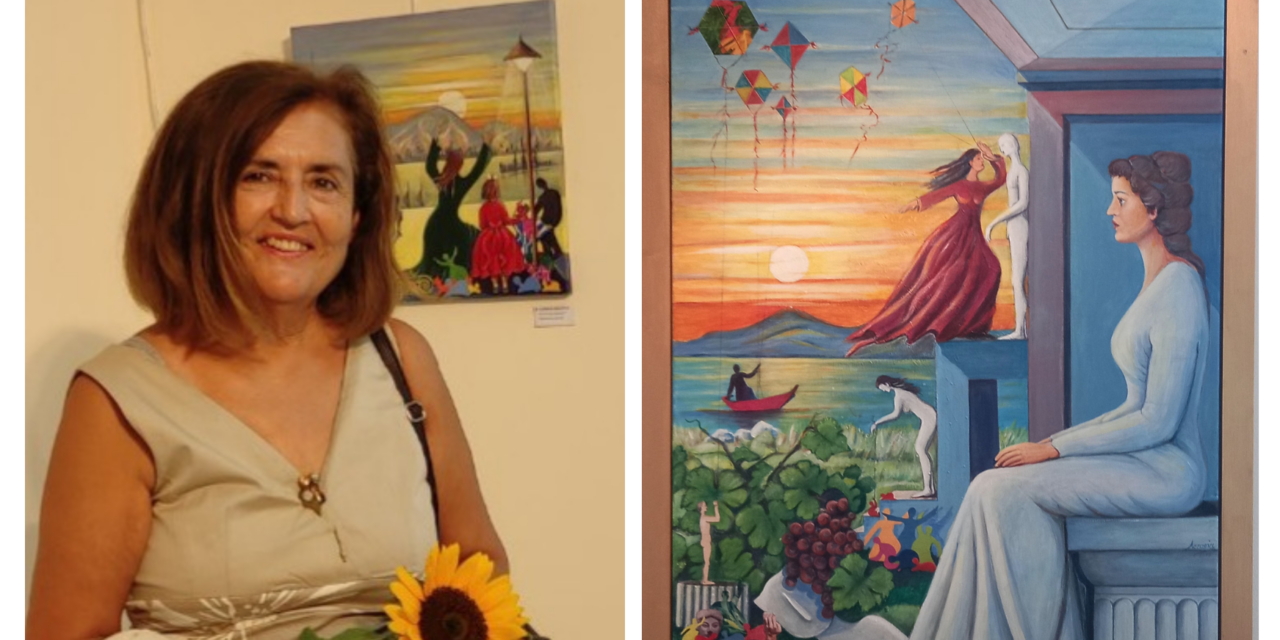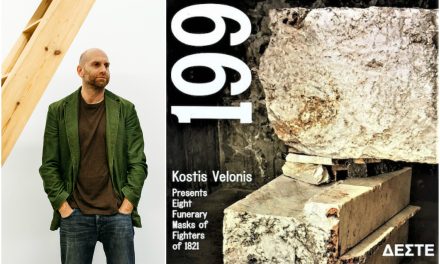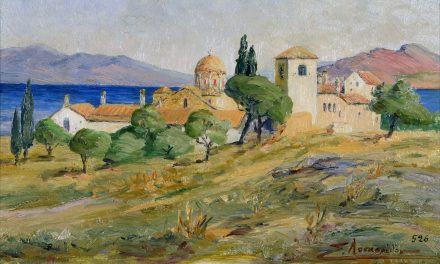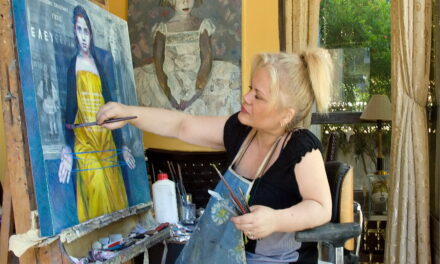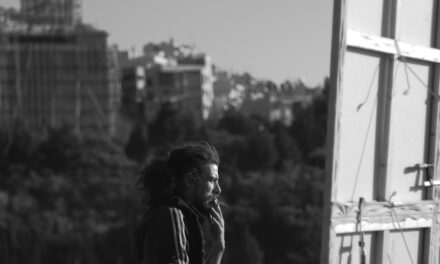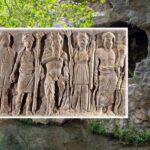Intense perspectives, two-dimensional depictions of space and dreamlike landscapes characterize Aspasia Bourcha’s art. Strongly influenced by symbolism and surrealism, her paintings bear a strong sense of personality and cultural depth, as they become a window into worlds where past and present converge and painting and poetry intertwine. Her atmospheric art is infused with a profound sense of Greek history and identity.
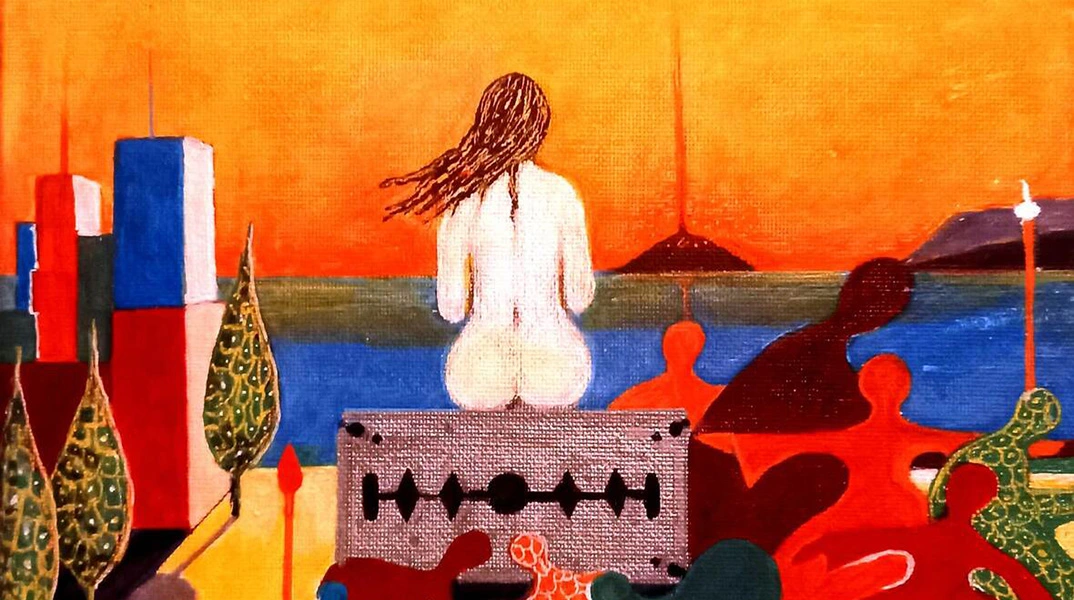
Her recent solo exhibition Dream Space at Art Zone 42 draws inspiration from the poetry collection Maria Nefeli, written by Odysseus Elytis, winner of the Nobel Prize for Literature in 1979. Her vibrant compositions, combining mixed techniques of acrylics and collage, focus on female identity, Mother Nature, and future challenges.
Aspasia Bourcha studied at the Athens School of Fine Arts, under Mavroeidis, Moralis, Mytaras and Lambrakis-Plaka. She worked as an art teacher at middle and high schools as well as the Acropolis Study Center. So far, she has held five solo painting exhibitions and participated in several group exhibitions. She has also illustrated several poetry collections and fairy tales.
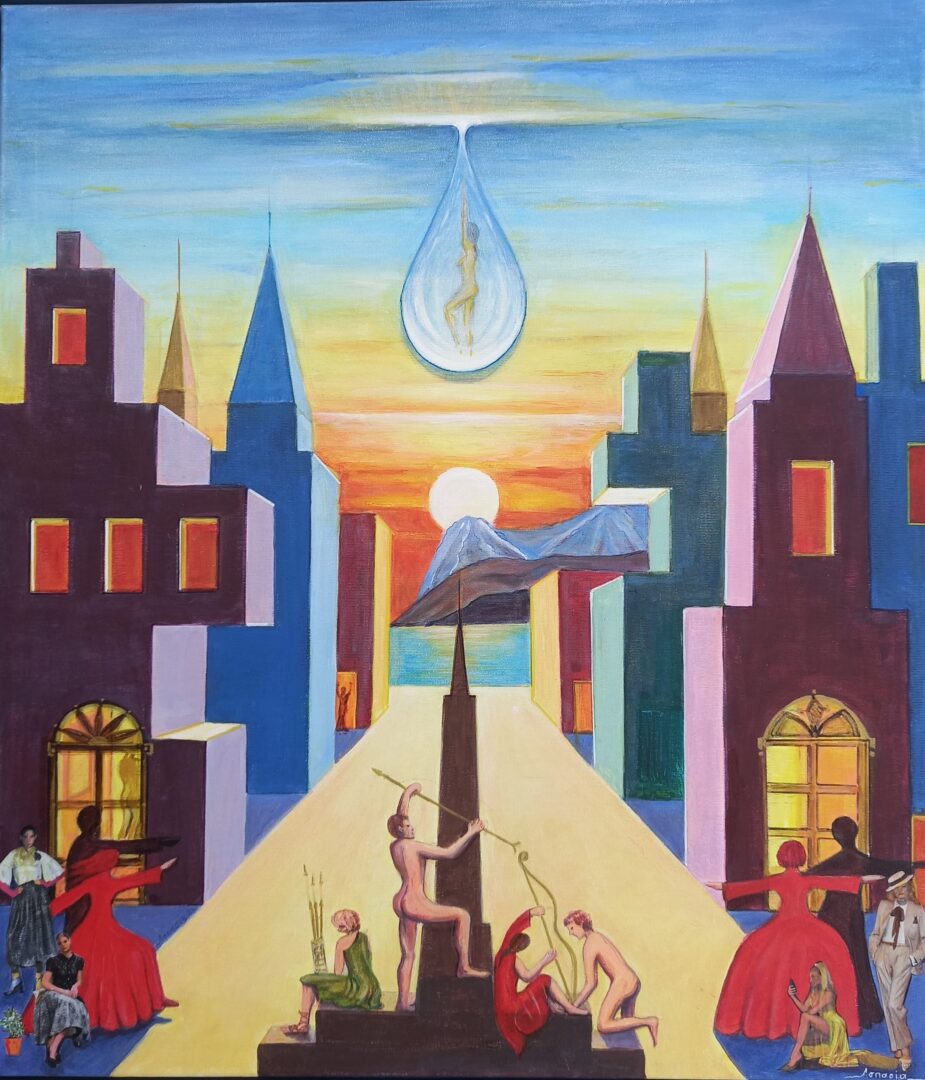
Aspasia Bourcha speaks to Greek News Agenda* about her art, poetry and source of inspiration.
Maria Nefeli, Elytis’ poem was the subject matter of your latest exhibition Dream Space. What was it that particularly inspired you in his poetry?
“I saw her everywhere. Holding a glass and looking into the void. Listening to records lying on the floor. Walking down the street in her baggy pants and an old trench coat”, are the lyrics referring to Maria Nefeli in Elytis’ poem.
I was stunned. I saw myself as a first-year student walking through the doors of the Technical University with my white bell-bottom pants decorated with geometric shapes…with the world at my grasp!
Images began to form in my mind, one after another. I started sketching on the book, in the margins, on the blank pages. After a while, these sketches became works. Poetry is surreal and so are my works… Dreamlike, metaphysical landscapes, linear perspective, harmonious pairs of colors and use of light, natural and artificial led me to this result. As for the collage… Α humble piece of paper can become part of the creation of the world as the surrealists used to say.
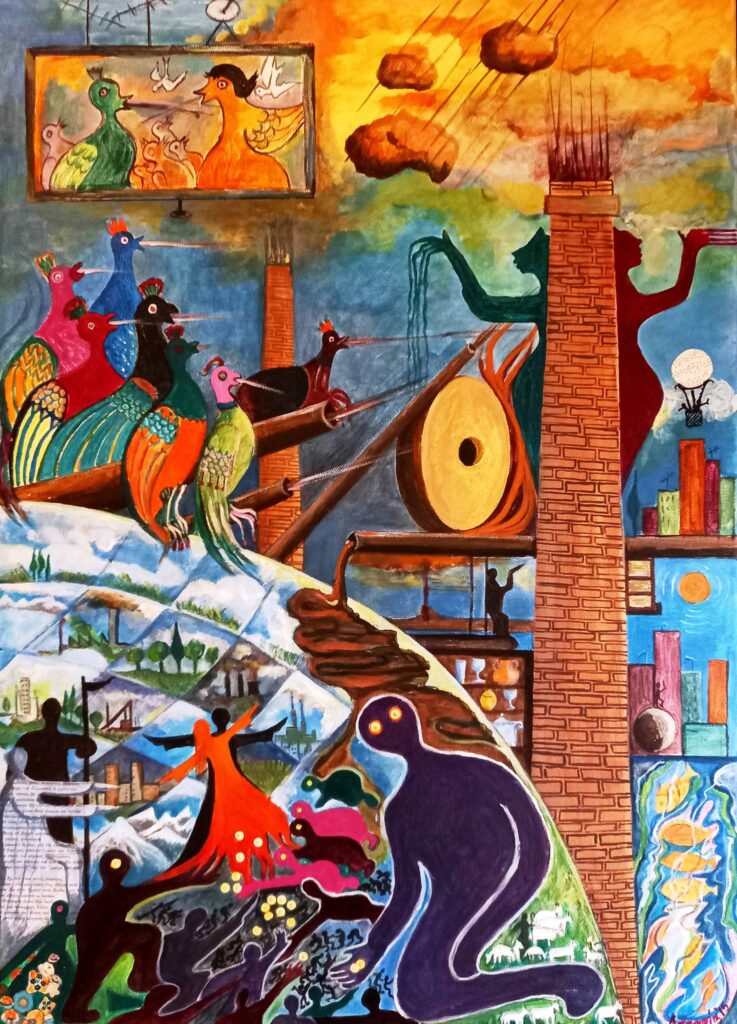
The female presence dominates your paintings, sometimes outdoing the male one. How do you think this relates to contemporary society?
Ι believe that a woman who can stand next to a man as equal and independent, who has made her dreams come true, in terms of education and financial independence, which is very important, is well equipped to take over the burdens of the family and to raise her children while making deliberate compromises… She will be able to balance difficult circumstances and succeed.
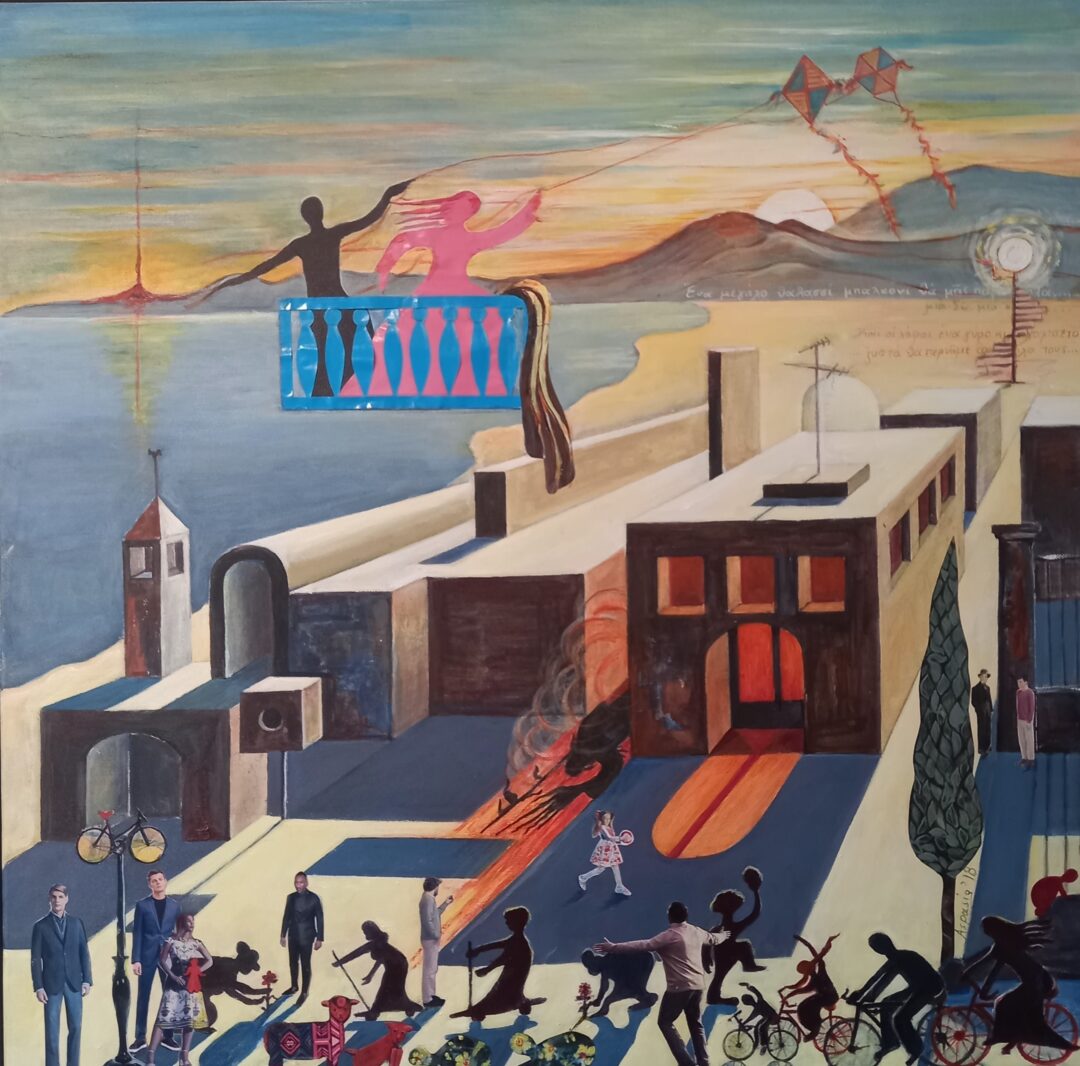
In all your paintings, the Greek element emerges through nature, architecture and sculpture. What do you think about contemporary Greece?
“If you take Greece apart, in the end, you will be left with an olive tree, a vineyard, and a boat… which means that with these items you can reconstruct it”, Odysseas Elytis, Nobel Prize laureate in Literature, wrote. The poet praised Greece, especially the Aegean Sea with the whitewashed houses, the endless blue of the sea, and the light, the light of Greece.
Today, however, in a world defined by globalization and technology, younger generations have limited time to admire the beauty of Greek nature. They take it for granted, they know little about the glorious past and hardly lift their eyes from their mobile and computer screens to admire it. It is even difficult to see a Greek visitor on the Acropolis sometimes.
You have been teaching children art for many years. How did this experience influence you as an artist?
Children have always been a source of inspiration for me. I gave them my love and affection. I was encouraging them to experiment with humble materials. We became a great team. We would set up exhibitions of their works, put on theater performances…Picasso once said that it took him three years to learn to paint like Raphael and a lifetime to paint like a child!
*Interview by Dora Trogadi
TAGS: ARTS

